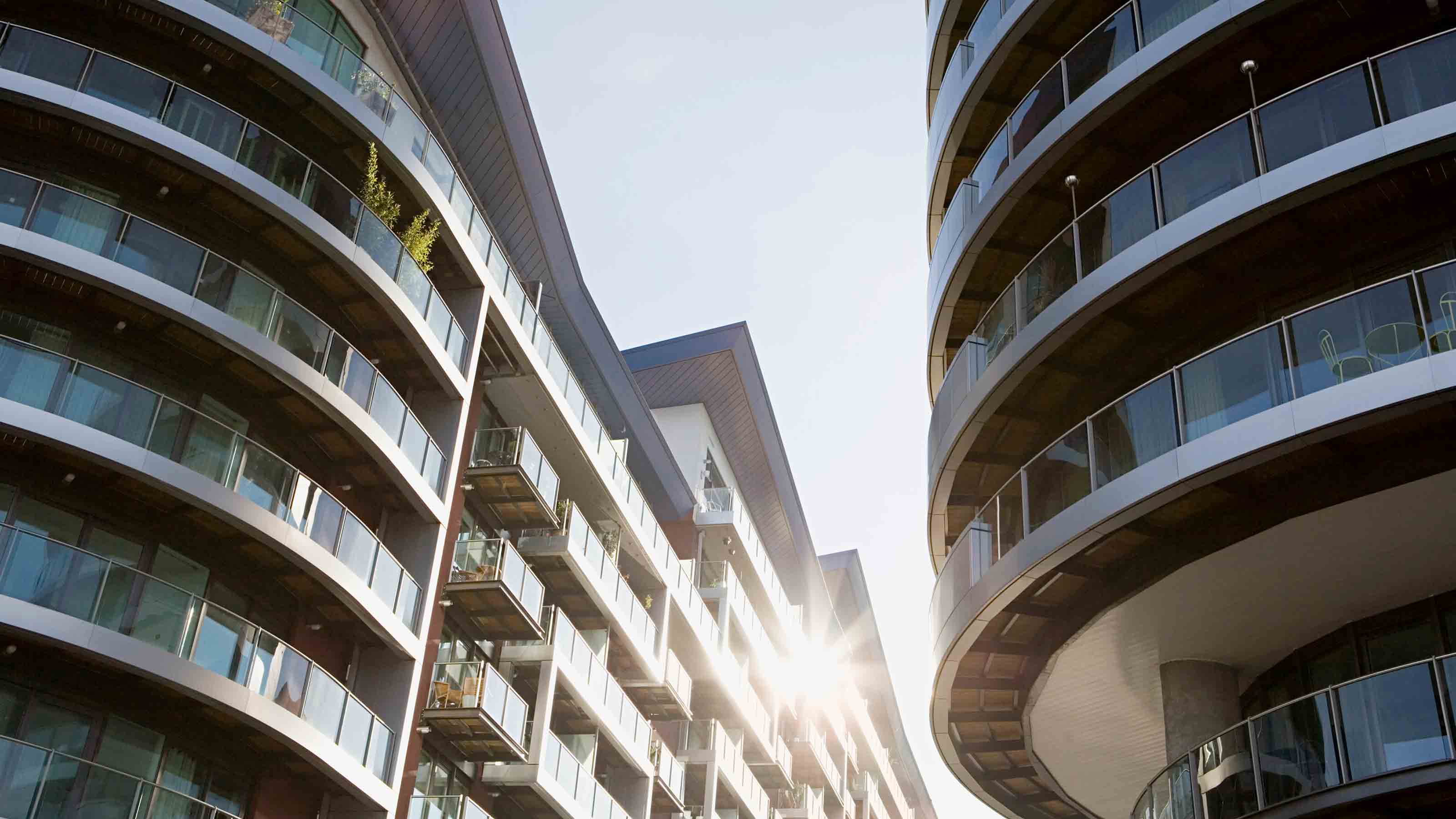Create a Greener Landscape
Save time and money without sacrificing a beautiful yard.

American yards have a drinking problem. for decades, we've bought into theaesthetic of the perpetually green lawn -- watered, fertilized and pest-free. And we've landscaped our yards with exotic plants that crave more water than the climate naturally supplies.
At 32 million acres, lawns are the largest irrigated crop in the U.S. We pamper them with one-third of all the residential water used daily (7 billion gallons); in some regions, it's as much as 50% to 70%. The thirst for water grows with the population and the increasing reliance on automatic irrigation -- which is so pervasive that it now produces summer water shortages even in relatively wet regions, such as the Pacific Northwest and New England.
| Row 0 - Cell 0 | Smarter Ways to Water Your Lawn |
| Row 1 - Cell 0 | 29 Ways to Conserve and Save |
| Row 2 - Cell 0 | Save Energy From the Ground Up |
| Row 3 - Cell 0 | Everything You Need to Go Green |
Much of that water might just as well go down the drain -- and much of it does. Homeowners who find their irrigation system's controller as perplexing as a VCR rely on their lawn-maintenance company, which all too often sets it and forgets it. The system ends up running on an irrigation schedule meant only for the hottest, driest summer months. Sousing the lawn diminishes its health and creates a vicious cycle of fertilizing, applying pesticides and herbicides, and then watering some more. Meanwhile, utilities (including power companies, which provide the power for water treatment) struggle to keep up with demand.

Sign up for Kiplinger’s Free E-Newsletters
Profit and prosper with the best of expert advice on investing, taxes, retirement, personal finance and more - straight to your e-mail.
Profit and prosper with the best of expert advice - straight to your e-mail.
April is a good time to initiate strategies that will save you money, time and labor and will do the environment some good -- without sacrificing an attractive yard. And green landscaping brings other benefits. In California, landscape designer Greg Rubin says he spends Sunday mornings on his own half-acre drinking coffee and enjoying the birds and butterflies attracted to his yard, while he listens to his neighbors mow their lawns. He has thrown away his bird feeders, too, because the native plants provide all the habitat and forage the birds need.
Xeriscape gardening for less-thirsty yards
The term xeriscaping may evoke images of the arid West and a bunch of rocks and cacti. Some call it zeroscaping, says Jim Knopf, author of WaterWise Landscaping With Trees, Shrubs and Vines: A Xeriscape Guide for the Rocky Mountain Region, California and Desert Southwest (Chamisa Books). But the strategy -- also known as water-wise gardening or greenscaping -- really involves minimizing the areas of your yard that need a lot of life support, he says.
In general, the transition to water-wise landscaping has two components. First, you need to rethink your lawn, focusing on the minimum size that fits your family's needs. Knopf says you can make your lawn smaller by simply putting in border gardens. You can also create gardens or mulched beds in areas that are difficult to maintain and water -- along fences, on steep slopes or in corners. If local home buyers expect a big backyard for kids and dogs to romp in, concentrate on the front yard.
The second task is to remove water-needy exotic plants and fill your beds with drought-tolerant trees, shrubs, ground cover, flowers and turf grass (such as buffalo and Bermuda). If you're loath to give up all your water-intensive exotics, gather them in one area, where you can quench their greater thirst most efficiently.
Your garden can be any style you like. Joanne Kostecky, a landscape designer in Allentown, Pa., and a past president of the American Nursery and Landscape Association, says she continues to design gardens that are lush, full and continuously blooming, but she now looks for hardier perennials that need less water to stay healthy.
It costs no more to install a water-wise landscape than a thirsty one, and it may cost substantially less, depending on the plants you choose and whether you avoid expensive automatic irrigation. While establishing any new landscape requires more water in the first year or so, a water-wise one will require less water from start to maturity -- about 20% to 50% less, with more savings if you do without an irrigation system.
[page break]
In San Diego, where hefty water bills have hit homeowners hard, landscape designer Rubin specializes in native California landscapes that use 60% to 90% less water than nonnative plants. Rubin has seen residential water bills for 50,000 to 100,000 gallons a month, which he attributes to trying to sustain a Florida-like landscape -- two palm trees, some ice plants and a ton of lawn -- in a Mediterranean climate. "The cost might have been $200 to $400 a month before, but now it's $600 to $800 a month," says Rubin.
| Row 0 - Cell 0 | Smarter Ways to Water Your Lawn |
| Row 1 - Cell 0 | 29 Ways to Conserve and Save |
| Row 2 - Cell 0 | Save Energy From the Ground Up |
| Row 3 - Cell 0 | Everything You Need to Go Green |
His strategy is to plant a "strong backbone" of evergreen plants that differ in color, texture and size, and place perennials along pathways so that they're easy to get to for pruning. The cost of installation is about the same as for a conventional landscape ($4 to $7 per square foot), he says, but his clients get a quick return on their investment because they save on water bills.
If your community imposes water restrictions, your plants might not grow as much as they would otherwise. But they won't die, either, and you'll spend less on replacements. Over the long run, all the costs associated with lawn maintenance will be lower than for a nonnative landscape. Plus, those border gardens will eventually shield your lawn from view when you don't feel like mowing it, says Knopf.
Before you start planting, check with your municipality or homeowners association to make sure you don't run afoul of restrictions on such things as grass height. In Colorado, Knopf says, it's illegal to prohibit xeriscaping. Your local government may even pay you to downsize your lawn. In Las Vegas, the Southern Nevada Water Authority rebates homeowners $1.50 per square foot of grass removed and replaced with xeriscape (up to 2,500 square feet annually).
Rainwater harvesting
Capturing rainwater is a smart way to give your landscaping a chlorine-free drink without paying municipal rates. A rainwater-harvesting system typically channels the water from the roof via your home's downspouts into a tank or cistern. A filtration device keeps out roof debris; in larger systems, a pump helps move water out of the tank.
In Austin, Tex., where rainfall averages 32 inches a year, a homeowner with a 2,500-square-foot roof could collect almost 45,000 gallons of rainwater in a typical year. In the Mid Atlantic states, a home with a 2,000-square-foot roof could collect 60,000 gallons.
The least-expensive system is a rain barrel, which holds 55 to 75 gallons and costs about $100. You can use just one, or link several together, as a gravity-fed source of drip irrigation for nearby flower beds. Rain barrels are usually made of plastic, and they come with an overflow spout, a valve near the bottom for filling your watering can and a screened lid to keep mosquitoes out. You can also prevent mosquitoes, which need six to nine days in standing water to mature, by regularly tapping the barrel. Many cities, such as Austin, Seattle, and Cary, N.C., sell barrels at a discount. You can also purchase them from nursery and garden retailers or from online sources, such as www.rainsaverusa.com.
To meet larger-scale needs -- such as supplementing your lawn's irrigation system, creating a fire-protection reserve or even using captured rainwater indoors (which requires more-careful filtration and treatment) -- you may need a storage tank, above or below ground, that holds thousands of gallons. Contact a specialist who can help you analyze your situation, supply and install the system, and help you maintain it. (To locate a specialist, go to the site of the American Rainwater Catchment Systems Association or www.harvesth2o.com.) Atlanta Water Conservation advertises complete above-ground systems for $1,500 to $7,500 and below-ground systems for $5,000 to $10,000. In Texas, Rain Catchment Systems says that it averages $1 per gallon of capacity for design, materials and installation. (For a guide to rainwater harvesting, visit the Web site of Texas A&M University's office of cooperative extension.)
Some cities offer rebates for installing such systems (Austin gives home-owners up to $500 toward the cost of installing one that handles more than 300 gallons). But you may need a permit first. In Colorado, for example, capturing rainfall (even in a rain barrel) is prohibited. And water-conservation expert Amy Vickers, in Amherst, Mass., worries that well-meaning harvesters who go gung-ho providing for household use may further disrupt the natural process of groundwater recharging and contribute to the low-flow problems of creeks and rivers.
A rain garden
Runoff is another aspect of the water-conservation problem. Because plots are often compacted and scraped clean of topsoil during development, they're less absorbent to start with -- and turf grasses absorb less water than other kinds of vegetation. Water sluices off our yards into our basements or onto neighbors' yards; into our watersheds, polluting drinking water at its source; and into municipal storm drains, increasing the load on water-treatment plants.
A cost-effective solution for most people is a rain garden -- a shallow depression lined with trees, shrubs and plants that mind neither drought nor inundation, cope well with the heavy nutrients in storm-water runoff and absorb many times the amount of water that turf grasses do. A rain garden will capture the rainwater and allow it to percolate into the ground, where it will recharge streams, aquifers and wells, says Dick Peterson, of Austin Energy's Green-Building program. It's an attractive alternative if your municipality would otherwise require a more industrial solution, such as a gravel pit or catch basin, to offset runoff from driveways or patios.
A rain garden is perfect for a low spot in your yard where water naturally collects. Or, if your yard is flat, you can excavate one or enhance it with a berm. Ideally, the garden sits close to the primary source of runoff but no closer than 10 feet to your house (so that you don't end up with a wet basement).
The cost to create a rain garden averages about $3 to $4 per square foot. How much you pay depends on the size and depth of the garden, whether you must replace or supplement local soils, whether the site needs an underdrain (a perforated pipe), your choice of plants, and how much you do yourself. For an overview of rain gardens, with a list of recommended plants by region, visit the Brooklyn Botanic Garden and search for "rain gardens + wetlands."
Some cities have begun offering homeowners incentives to take storm-water remediation measures. Portland, Ore., discounts residents' storm-water management fees in exchange for runoff solutions on their property, and in some areas, the city pays an incentive if residents disconnect their downspouts from storm sewers. Seattle is developing a plan for incentives to help protect water quality and the salmon run.
Get Kiplinger Today newsletter — free
Profit and prosper with the best of Kiplinger's advice on investing, taxes, retirement, personal finance and much more. Delivered daily. Enter your email in the box and click Sign Me Up.

-
 Stock Market Today: Stocks Soar on China Trade Talk Hopes
Stock Market Today: Stocks Soar on China Trade Talk HopesTreasury Secretary Bessent said current U.S.-China trade relations are unsustainable and signaled hopes for negotiations.
By Karee Venema
-
 2026 Disney Dining Plan Returns: Free Dining for Kids & Resort Benefits
2026 Disney Dining Plan Returns: Free Dining for Kids & Resort BenefitsPlan your 2026 Walt Disney World vacation now. Learn about the returning Disney Dining Plan, how kids aged three to nine eat free, and the exclusive benefits of staying at a Disney Resort hotel.
By Carla Ayers
-
 How to Search For Foreclosures Near You: Best Websites for Listings
How to Search For Foreclosures Near You: Best Websites for ListingsMaking Your Money Last Searching for a foreclosed home? These top-rated foreclosure websites — including free, paid and government options — can help you find listings near you.
By Bob Niedt
-
 Luxury Home Prices Rise as the Rich Dodge High Mortgage Rates
Luxury Home Prices Rise as the Rich Dodge High Mortgage RatesLuxury home prices rose 9% to the highest third-quarter level on record, Redfin reports, growing nearly three times faster than non-luxury prices.
By Kathryn Pomroy
-
 Four Tips for Renting Out Your Home on Airbnb
Four Tips for Renting Out Your Home on Airbnbreal estate Here's what you should know before listing your home on Airbnb.
By Miriam Cross
-
 Five Ways to Shop for a Low Mortgage Rate
Five Ways to Shop for a Low Mortgage RateBecoming a Homeowner Mortgage rates are high this year, but you can still find an affordable loan with these tips.
By Daniel Bortz
-
 Looking to Relocate? Plan for Climate Change
Looking to Relocate? Plan for Climate Changebuying a home Extreme weather events are on the rise. If you’re moving, make sure your new home is protected from climate change disasters.
By Rivan V. Stinson
-
 Retirees, A Healthy Condo Has a Flush Reserve Fund
Retirees, A Healthy Condo Has a Flush Reserve FundSmart Buying Reserve funds for a third of homeowner and condo associations have insufficient cash, experts say. Here are some cautionary steps you should take.
By Patricia Mertz Esswein
-
 Cash Home Buyers: New Services Offer Help Making All-Cash Offers
Cash Home Buyers: New Services Offer Help Making All-Cash OffersBecoming a Homeowner Some firms help home buyers make all-cash offers on homes. Weigh the fees before you sign on.
By Emma Patch
-
 Home Sale Prices in the 50 Largest Metro Areas
Home Sale Prices in the 50 Largest Metro AreasBecoming a Homeowner What’s happening in the market where you live?
By the editors of Kiplinger's Personal Finance